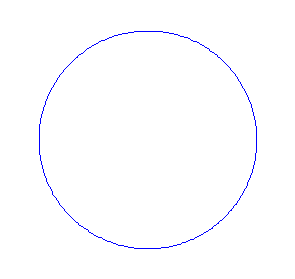Why is it that unlike other quantum properties such as momentum and velocity, which usually are given through (probabilistic) continuous values, spin has a (probabilistic) discrete spectrum?
-
$\begingroup$ @user758556: in our current consensus model of the universe, position and momentum are not quantised. There are speculative theories which says otherwise. $\endgroup$– gennethCommented Jun 7, 2012 at 3:51
-
5$\begingroup$ @Farhad: mathematically the difference between position and angle is that of compactness. This directly implies the quantisation of the conjugate variables. The deeper question of "why angles" is perhaps a little beyond the scope of physics. $\endgroup$– gennethCommented Jun 7, 2012 at 3:53
-
1$\begingroup$ spin is not necessarily assigned a "definite quantized" value. Non-eigenstates of an operator represent non definite (quantum) states and you come across "probabilistic values" - even for spin. Stern-Gerlach experiment illustrates this: an eigenstate of $S_y$ is equally likely to be found with $z$-spin up or down. @Farhad Perhaps you are asking about the discrete nature of the observable spin VS the continuum nature of other observables, e.g. position, are you? $\endgroup$– c.p.Commented Jun 7, 2012 at 5:22
-
2$\begingroup$ I think that the question should be phrased differently. You don't mean to ask why spin is quantized, everything is. What you mean is why spin has discrete spectrum. $\endgroup$– MBNCommented Jun 7, 2012 at 7:22
-
$\begingroup$ Well, just to be clear, momentum can be quantized depending on the system and the boundary conditions e.g. particle in a box. The comments below seem to indicate spin is sort of like a box with periodic boundary conditions. $\endgroup$– DJBunkCommented Jun 7, 2012 at 13:10
3 Answers
I recently was writing about this on wikipedia. The most intuitive way to see why an operator like $S_z$ has discrete values is based on its relation to rotation operators:
$R_{internal}(\hat{z},\phi) = \exp(-i\phi S_z / \hbar)$
where the left side means rotation of angle $\phi$ about the $z$-axis, but only rotating the "internal state" of particles not its spatial position (see wikipedia article for details). Since a rotation of $\phi=720^\circ$ [see below] is the same as no rotation at all (i.e. the identity operator), you conclude that the eigenvalues of $S_z$ can only be integers or half-integers.

...much like how a standing wave on a circular string has to have an integer number of wavelengths.
--
Wait, why did I say $720^\circ$ not $360^\circ$?? Well, there are two mathematical groups that could plausibly correspond to rotation in the real world: $SO(3)$ and $SU(2)$. In $SO(3)$ but not $SU(2)$, rotating $360^\circ$ is the same as not rotating at all. In BOTH of them, rotating $720^\circ$ is the same as not rotating at all. So we can be totally sure that the $720^\circ$ rotation operator is the identity operator, whereas for $360^\circ$ it would just be a guess based on extrapolating from classical physics intuition. As long as there are fermions present, the guess is wrong! Rotating a fermion by $360^\circ$ corresponds to flipping the sign of its wavefunction.
-
$\begingroup$ Nice answer, but maybe you should add a paragraph for why the momentum of a free particle is not quantized, for completeness in the answer. $\endgroup$– anna vCommented Jun 8, 2012 at 11:50
The deeper reason is that the components of the spin (angular momentum) vector generate the group of rotations. This group is compact, which means that a rotation perpendicular to an arbitrary direction necessarily closes. This implies for mathematical reasons (valid for every compact Lie group) that its representations as operators in a Hilbert space come in discrete batches only, and the eigenvalues of any component, in general functions of the label of the representation, must in the compact case be discrete.
In contrast, position and momentum generate the noncompact Weyl group (a central extension of the phase space translations), and a translation laong an arbitrary phase space direction never closes. This implies that the eigenvalues vary continuously.
I will take a hand waving guess at this.
Nature is quantum mechanical , i.e. it is ruled by quantum mechanical equations that define motion etc. The classical Lagrangians are a limiting case mostly for large dimensions.
Quantization appears when the variables are constrained , for example in the confines of a potential well. One finds that only quantized values are allowed, so in a confining potential also momentum will be quantized as long as there are discrete energy levels.
So the question can only be correct if one considers the unconfined particles and becomes:
"why unconfined elementary particles have a quantized spin in contrast to momentum or energy, etc?"
My intuitive answer is: probably because spin is a rotation and rotations are limited by the $0$ to $2\pi$ confinement of the values of phi, a finite constraint, in contrast to momentum which can go from zero to infinity. Constraints are conditions for quantization.
As a help in intuition look at section 14 of Schiff's quantum mechanics, separation in spherical coordinates of the schroedinger equation for spherically symmetric potentials. . The angular equations have no dependence on the potential and their solutions are quantized.
-
$\begingroup$ see also physics.stackexchange.com/q/1 $\endgroup$– anna vCommented Jun 7, 2012 at 8:39
